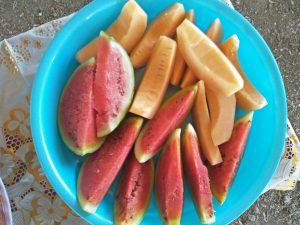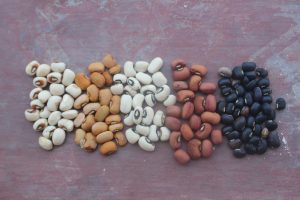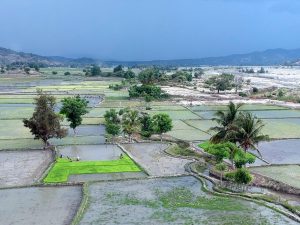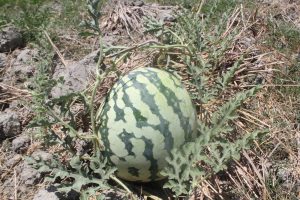The bad news: the fluffy, delicate little white flower you see while driving through the hills of Timor-Leste doesn’t just make for some nice scenery — it’s in fact an aggressive and invasive weed known as mist flower, which takes over pastures, kills crops, and smothers creeks.
The good news: new research, presented by Ai-Com at last month’s Timor-Leste Studies Association conference in Dili, has unearthed an effective and economical new method of controlling the invasive weed in Timor-Leste: biocontrol.
What is mist flower?
Ageratina riparia, or mist flower, is a low-growing perennial daisy native to Mexico and the Caribbean. It has been distributed around the world as an ornamental flower — spreading as widely as southern Africa, tropical Asia, eastern Australia, New Zealand, Hawaii, and the Canary Islands — and has become a serious weed in many tropical and warm areas. In Timor-Leste, it was first reported between 2005 and 2007 on the southern side of Mount Kablaki, and in Rototu, on the southern slopes in Same. Since then, it’s been found in 2011 roadside in Atsabe, above Letefoho in Ermera municipality — where it was reported by farmers to be killing Letefoho coffee trees—and at 1,600 metres above sea level in Maubisse.
Since 2015, mist flower has crept to the northern face of the mountain in cool, wet locations, and often along the edges of waterways. It now dominates water courses, forests, coffee plantations and open areas.
Why is it a problem in Timor-Leste?
Mist flower is an aggressive, invasive and hardy plant that kills crops, eradicates native plants, reduces biodiversity and dominates water sources. With deep, tough roots, it’s controlled only by extensive digging — but as soon as farmers remove it, it grows back. In 2013, coffee farmers in Letefoto described that mist flower was killing their coffee trees, and that it would grow quickly back after the coffee trees were rehabilitated.
Mist flower produces creeping stems that root at the nodes — allowing the plant to form a dense mat of interwoven stems. Its seeds are dispersed by wind and water, and it dominates water courses — smothering and displacing native water-side plant species. Taking over pastures, it reduces forage quality for livestock but has no commercial feed value.
It’s known in international literature as one of the top weeds in Timor-Leste, but is poorly recognised within the country: academic list mist flower as a high-impact weed to Timorese agriculture and environment, but local staff don’t identify it as a prominent weed in the way they do Chromolenas, Jatropha and Lantana. In Hatobulico, at the base of Mount Ramelau, the weed is variously called duut 2000, duut 2010 or duut 2015, depending on the year it was first observed.
The solution: biocontrol
While individual plants and outlier populations of mist flower in Timor-Leste can be controlled by hand-pulling or by applying herbicides, the only effective and economic method of preventing spread and reducing core infestations is through using biocontrol.
Hand-pulling the weed is labour-intensive and often prevented by the difficulty in accessing infested areas.
Hawaii, New Zealand and Australia have effectively used a biological control agent against the mist flower by releasing a white smut fungus, native to Mexico, tested over 50 years.
Tested in Hawaii in the 1970s, the fungus caused leaf damage and extensive defoliation to the mist flower, which was successfully controlled in wet areas within eight months and in dry areas within three to eight years. Introduced in South Africa in 1989, the fungus effectively defoliated and controlled plants within 12 months, and in New Zealand in 1998 and 2001, caused a dramatic and rapid decline in mist flower abundance.
The fungus a has also been tested in Australia, with a recent finding in 2018 of a five-fold reduction in mist flower cover and a four-fold increase in native plant richness. This clearly demonstrates that biocontrol is an effective and non-invasive method of eradicating mist flower and regenerating local environments.
The survey conducted under this new research is intended to act as a precursor to a baseline study to determine the extent of Timor-Leste’s mist flower infestation — providing valuable baseline information for work that can help farming families eradicate this weed, reclaim pastures and water sources, improve biodiversity and protect local environments.




